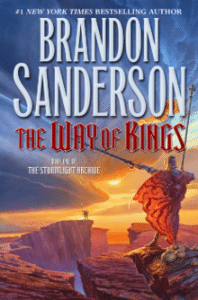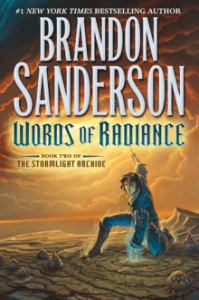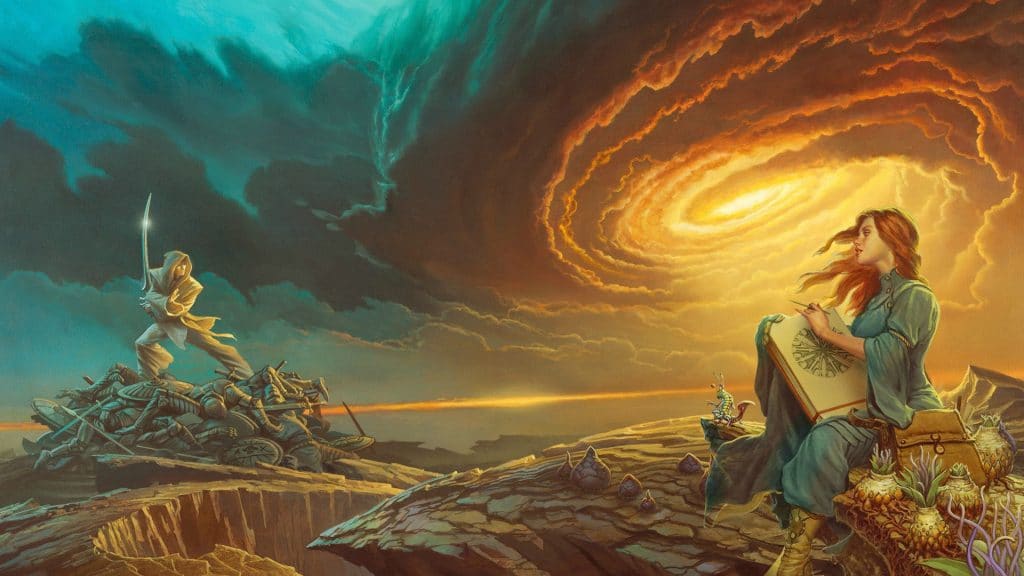The more I read Brandon Sanderson, the more I want to read Brandon Sanderson.
My first exposure to his name came in 2007 when I heard he was selected to finish Robert Jordan’s Wheel of Time series. He would for quite some time just be “that guy that wrapped up WoT” to me. Sure, he would go on to do a good job of it, but I never really saw the work as “his.” It was more like Jordan had left him a LEGO set with all the pieces and a set of instructions. He built it alright, but the design was not his own.
I realize how naive and mistaken that viewpoint is now.
The only other works of Sanderson’s that I’ve read to this day have been the two completed novels in his Stormlight Archive: The Way of Kings and Words of Radiance. Returning to the metaphor of the LEGO set, I now see Sanderson’s work like this:
- He has designed every individual piece, not just the finished product.
- Every piece matters as each informs the whole.
- And occasionally when you pick up the box to take a closer look at the picture printed on it, a piece falls out of it that you didn’t realize was missing…and it changes everything.
About a sixth of the way through Words of Radiance, a piece fell out of the Stormlight Archive box that did just that.
Brandon Sanderson: A Shift in Perspective
 In the first Interlude of Words of Radiance, we are introduced to Eshonai. Now it had been quite some time since I’d finished The Way of Kings, so I couldn’t immediately recall whether or not we’d been introduced previously. However, in fewer than a dozen sentences, there is a distinction drawn between Eshonai and humans.
In the first Interlude of Words of Radiance, we are introduced to Eshonai. Now it had been quite some time since I’d finished The Way of Kings, so I couldn’t immediately recall whether or not we’d been introduced previously. However, in fewer than a dozen sentences, there is a distinction drawn between Eshonai and humans.
She is a Parshendi.
In all that precedes this interlude chapter over the course of both books, the Parshendi are at war with the humans of Alekthar. They are described as inhuman and barbaric. Little detail is given to them as individuals. Instead, they are spoken of in generalities and fall into one of two categories:
You have the parshmen who are treated exclusively as slaves to the Alethi. They are docile and rarely speak. They are nearly invariably regarded as subhuman; they are commanded, punished, bought, and sold by the Alethi.
And then you have the Parshendi. These are a warrior-like members of the race. They have enhanced physical features and capabilities as well as organic, carapace-like armor plating. They’ve a few odd quirks like singing in unison even in battle and fighting in pairs, but not much else is known of or spoken of concerning them. They are the enemy.
 Neither group is fleshed out much more than this because up to this point in the series, we’ve only been treated to a human perspective.
Neither group is fleshed out much more than this because up to this point in the series, we’ve only been treated to a human perspective.
All of this changes with Eshonai.
- We learn that “Parshendi” is a human term for her race, but they call themselves The Listeners.
- We learn that the songs they sing are emotive and tonal. There are songs for resolve, mourning, skepticism, peace, irritation, reprimand, and many others.
- We learn that The Listeners have lore, legends, and art of their own. In other words: They’re intelligent and cultured.
It is a perspective shift of seismic proportions.
Suddenly the enemy has a name and a face. They are granted humanity (to borrow an extremely ethnocentric term in this case). The war now has two sides, two stories, two voices.
In Another’s Shoes
A book club I’m involved in locally just finished Ta’Nehisi Coates’ Between the World and Me, and in the midst of the discussion I offered up this shift in perspective as analogous. Now, I’ve no idea if this was Sanderson’s intent of course, but the applicability is jarring.
Sometimes we grow blinders to the “other side(s).” Sometimes its the fault of nature (we grow up in an environment that is homogenous and seemingly isolated). Other times it may be the fault of nurture (we’re told what to think and conditioned to perceive and act in specific ways). Could be that both are in play.
It was difficult for me not to read a commentary on racism between the lines of that Eshonai chapter. The lines had already been drawn (ie the “us versus them” aspect of the war raging on the Shattered Plains and the language used by the humans with regards to the “Parshendi”). And many authors would have been happy to leave the Parshendi as Parshendi.
Not Sanderson.
And even as the majority of both sides continue to seek the destruction of the other, paragons among the likes of both races pursue a different end.
It is seen in the passing of a spear from a human to a Parshman.
It is seen in the request for a parley from a Listener to an Alethi.

Brandon Sanderson: Master World Builder
I was already in love with The Stormlight Archive and all of the obvious, intentional, and truly remarkable world building Sanderson had managed within its pages. The eleven pages of the first Eshonai chapter in Words of Radiance radically challenged the perspective contained within the combined 1400+ pages that preceded it and heavily colors each that follows it.
It is a much sophisticated version of the Old Lady or Princess? illusion. It does a fantastic job of selling you on the old lady before flipping the page over and asking, “Okay, now what do you see? More importantly…What does this mean? And what does it teach you?”

